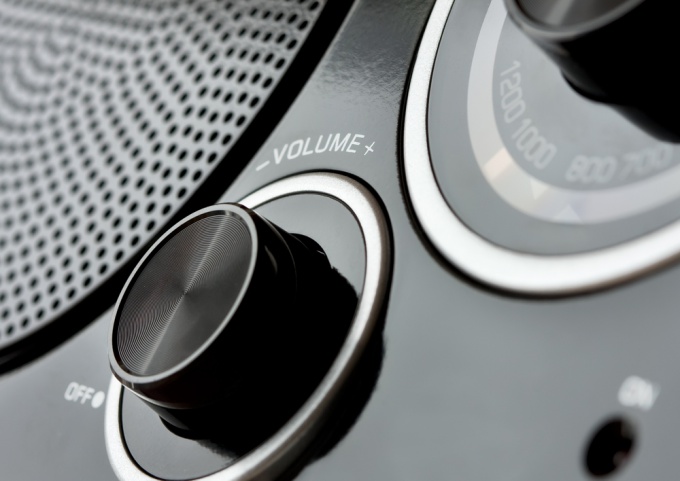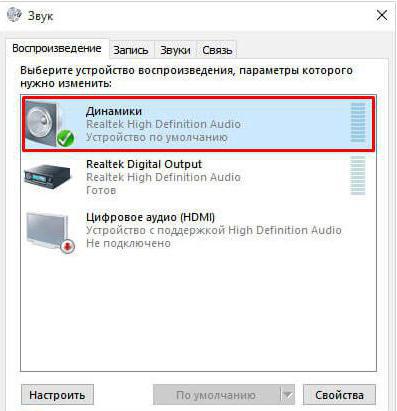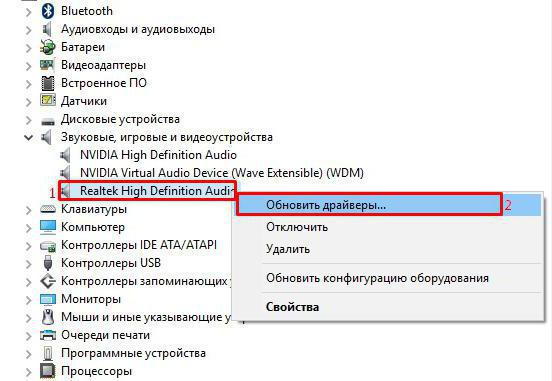Columns can play quietly, primarily due to the playback level setting sound signal. Check the special regulators on their body that adjust this parameter. Also make sure you don't have the sound limiting feature turned on. Check the volume setting in the player that plays audio and video files on your computer, sometimes this may be the reason. Also don't forget to check the signal from sound card by clicking on the sound settings icon in the notification area on the taskbar operating system.Try also to check the connection of the speaker wires, make sure that the wire is in close contact with the terminals on back wall audio devices. Make sure the wires are not damaged, have not been exposed to water or have been exposed to any other adverse external influences. Check your sound card driver and reinstall or update it if necessary. Also open the dedicated driver management program and check the audio level settings. Make sure the problem is with the speakers. To do this, connect them using a cable to another device, such as a portable player or phone. To do this, use a cable with a jack connector. Test your computer by connecting speakers or headphones to its sound card. If the speakers begin to play quietly after a certain time and you have not made any changes in the organization of their operation, this most likely indicates a malfunction. Contact the special service center for audio equipment repair, or, if you have certain skills, perform the repair yourself.
Meet a person on the street listening to music through headphones Now you can anywhere. This allows you not to distract passersby, while still enjoying your favorite compositions. Sometimes you have to use headphones so that the information you hear remains confidential. But everything has its downsides. Headphones, for example, not only do not transmit the full spectrum of sound, but also do not play as loudly as stationary speakers.
There are many reasons why headphones sound quiet. To begin with, it’s worth understanding that you definitely shouldn’t expect from a miniature speaker exactly the same as from large ones. He won't be able to cope with this purely physically and technical specifications. It is also possible that the headphones simply do not have enough power. Try connecting through a special amplifier. It is inexpensive, and increases quality and volume significantly. Excessive lightness can also affect the sound level. The sound actually goes in all directions. And not in one direction, which could increase the volume. In addition, large massive headphones would allow you to hear the sound better. In addition, you should pay attention to which cable is used to connect the headphones to the sound source. It must be shielded to avoid interference, but at the same time have low resistance. Look at the design of the headphones. Vacuum headphones allow you to protect yourself from extraneous noise, which will allow you to better hear the sound. If everything is in order with the headphones, you should check the headphone plug. Perhaps it does not fit very tightly into the headphone jack. This reduces contact; it's natural that headphones will play quieter and worse. The problem may also be in the computer's sound card. Check whether there are any signs of burnout on it, how tightly it is installed. It is also worth checking the volume level on your computer by launching the volume control located in the tray. If the sound disappears when you move the plug, the problem is in the headphone jack. The problem may also be in the sound card driver. Reinstall it.
Bringing the speakers into working condition is a fairly simple matter that does not require special knowledge or skills. You just need to be extremely careful not to mix up the necessary wires. And, of course, when installing speakers, you should take into account the sound effect that occurs with their different configurations.

To install the speakers correctly, the first step is to choose the optimal location from an acoustics point of view. It is believed that the distance between two or more stereo speakers should not exceed one and a half meters. Otherwise, their sound will be much worse perceived by the listener and “blurred” in space. You should not place any speakers directly on the floor, which absorbs high frequencies and “quenches” their strength. Ideally, they should be located at a distance of 1 to 2 meters from the floor. And below it is better to place a subwoofer, the low frequencies of which sound more harmoniously on any hard surface.
How to install speakers yourself: practical tips
The vast majority of speaker models are connected to a subwoofer and other audio devices via an audio cable. As a rule, its plugs are painted in a light green color, which cannot be confused with any other. Also, to install the speakers yourself, you should remember that they must be connected to each other. Thus, two speakers combined into a single unit are connected to the audio output device at once, and not each separately.
How to install speakers correctly and not make mistakes
When installing speakers, you should also take their weight into account. If these are small, compact audio devices, then there is no need to install safety support devices. If the speakers weigh more than 4-5 kilograms each, it makes sense to install special brackets. They are durable metal brackets that bear the main weight load of the speakers.
If you did everything correctly, the speakers should sound smooth and clear, with the same volume. If one of them sounds quieter or, conversely, louder, try adjusting the subwoofer settings. It is also recommended to check the accuracy of the connection with the sound output device.
Video on the topic
Sources:
- Practical recommendations on how to choose speakers for your car, rating
Sometimes, among friends, you want to sing something beautiful and piercing with a guitar. At the same time, the composition must be known so that everyone can perform it together. Song of the group Epidemic " Rider from ice" is an excellent option for such a case.

You will need
- Guitar, lyrics, chords.
Instructions
Tune your guitar. Lyrical songs that need to be played by fingerpicking require especially careful string construction. This can be done using an electronic tuner, or “online guitar tuning”, for example, guitartuneronline.ru.
Quiet sound on a computer may be evidence of both hardware and software problems and malfunctions.
Let's try to describe in more detail all the possible causes of the problem and effective ways its elimination.
Problem #1. Possible hardware problems
Among the hardware reasons why the sound became quieter are the following:
- Outdated speaker connectors. All connectors break periodically. Typically this problem occurs when personal computer installed old version sound card.
Also, the problem of non-working connectors is due to the fact that they were used too often, constantly turning devices on and off.
Due to such frequent use, contact with the plug is lost, so the audio device may work quietly or not work at all. The solution to this problem is to replace the connector;
Advice! Make sure that, other than a broken jack, your audio device is working properly and producing sound at the correct level. To do this, connect it to another computer.
- Failure at the sound card level. In this case, you need to contact a service center to repair or replace the sound card of your computer or laptop.
Problem #2. The need to update drivers
Almost all problems with displaying connected devices to a computer boil down to the need to update the driver software.
First of all, if the sound is quiet, you need to check the relevance installed drivers for the device's sound or video card (in modern computers video cards contain the functions of sound cards, which saves space inside the computer case).
Advice! You need to download all the necessary driver software from the manufacturer’s website, this way you will protect yourself from the risk of downloading a virus or other type malware.
It is also necessary to check the drivers of individual audio devices connected to the computer.
Follow the instructions below:
- Go to the system device manager;
- Then select the Audio Input and Audio Output Devices tab as shown in the image below;
- Click on any of the devices right click mouse and select driver update, then in the installation wizard that opens, select automatic search updates and wait for them to install.
The entire process of updating the device driver will happen automatically within one minute; the computer must have an Internet connection. Do the same for all other devices in the audio tab in Device Manager.
Problem #3. The sound in the headphones is too quiet
Why do headphones play sound too quietly:
- The headphones may be broken or damaged. To eliminate the possibility of headphones breaking, try testing them on your smartphone, tablet or any other device. If they work fine, the problem is with the computer.
- If you are using an operating room Windows system xp, then the problem of quiet sound playback is quite standard. The reason for the problem is that Microsoft has not released new updates for the sound card for several years and does not support the outdated operating system at all.
This is why many modern headphones and other audio devices may be incompatible with the OS and, accordingly, will not work correctly. - Make sure all drivers are installed and working correctly. To do this, find the connected headphones in the device manager, right-click on them and enable the device properties, as shown in the figure below.
IN in this case, the system shows that the headphones are working normally.
If the state of the connected headphones is determined to be erroneous or critical, you should update the hardware configuration, after which you should be sure to disconnect the headphones and restart your computer or laptop, then connect the headphones again and test the sound.
Everything should work fine. An example of updating the configuration of connected headphones is shown in the figure below.
Problem #4. Quiet sound when playing movies
Often, some film distributors deliberately reduce the sound level in order to protect themselves from possible claims from copyright holders, because automatic programs to identify pirated content, they cannot distinguish between two identical audio tracks if they are played at different frequencies.
Thus, the movie you downloaded may play sound quietly not at all due to problems in the system.
If your player plays all audio and video quite quietly, you need to install new codecs - unique drivers for recognizing video and audio tracks, without delay and in the correct encoding.
You can download codecs from the official website of the developer of your player.
Test the sound of the same video in different players; in most cases, only one of the players does not play the audio tracks correctly.
Make sure that all audio drivers on your computer or laptop are installed and working correctly. Use the instructions given above in the article.
Problem #5. Quiet sound from speakers
Quiet sound from the speakers may indicate more than just incorrectly installed driver software. The speakers may be dirty with dust or broken.
Check if the speakers are dirty from the inside, because too much dust accumulation can be a direct reason that the sound is not reproduced correctly:
- Open the back cover of the speaker housing, an example of open speakers is shown in the figure;
- Check the condition of all wires; perhaps some of them may have been damaged during a fall or other mechanical damage to the device. This may cause sound to be intermittent or too quiet;
- Thoroughly clean the contents of the case from dust and cobwebs. This can be done using a cosmetic or artistic brush. Never use a damp cloth. Avoid getting moisture inside the device.
Problem #6. Incorrect operation of computer audio devices at the OS level
If you have updated all drivers, set up a new hardware configuration, verified that your speakers and headphones are working properly when connected to other devices, and also verified that the problem is not related to hardware failure, and the device is still running quietly, use the following sound settings option.
Most likely, the sound does not work correctly at the level of the computer or laptop operating system.
You can increase the volume in Windows 7-10 as follows:
- Play any music file. This way, during the setup process, you can adjust the volume in real time;
- Click on the sound icon, which is located next to the clock on the desktop device panel. Check the sound level;
- If the sound level is high and the music is playing quietly, go to the control panel of your computers and enter the word “sound” in the content search field. Among the search results, select volume settings, the following window will open;
If the mixer is set to low, adjust it so the music should sound louder, then apply the settings and close the computer volume control window.
Sound Booster software
You can also use a third-party device to adjust the system sound. software. A wonderful program for quick setup sound is a utility Sound Booster.
What to do if you have low sound from your speakers?
Quiet sound on the computer - Possible reasons and troubleshooting
Setting up sound on Windows7 by LuckyMaverick
Will help you figure out where to start in Windows 7 when setting up audio, before setting up the Audio Manager!
Many users of the tenth version of Windows OS sometimes, after upgrading to this modification, a “clean” installation, or after installing updates for an existing system, complain that there are problems with sound (for example, after Windows updates 10 the sound became quieter or disappeared completely). Why is this happening? There may not be so many reasons, and the problem can be eliminated in several simple ways, which are further proposed for consideration.
After updating Windows 10, the sound became quieter: what to do first
If such a situation arises, the first thing you need to do is diagnose the sound system yourself. If there is no sound, it has become lower in volume level, extraneous noise or wheezing, first go to the sound system settings, using RMB on the volume icon in the system tray and selecting the troubleshooting line.
If problems are detected, the system will provide recommendations on how to eliminate them at each stage. If no problems are found, the devices window will open. You can check them yourself. If there is no sound in Windows 10, select active device, which is the default (indicated by a green checkmark) and click the settings button. Next, go through several steps to detect problems. If none of this has any effect, and there is no sound in Windows 10 even after this, proceed to the next steps.
Selecting a playback device
Tenth Windows version In terms of the sound system it looks very interesting. The fact is that it can automatically add third-party playback devices, such as sound systems graphics adapters, HDMI devices, or even virtual control components like SoundMAX. Such devices are capable of intercepting control of the sound system, and their settings may be the reason why the volume has decreased.

In the window where all playback devices are shown, disable all third-party devices and software audio components and select the exact device that is used in this moment(for example, Realtek HD Audio speakers - by the way, there may be not one, but two). Try a playback or test on each one. Set the one that works fine as your default device.
Disabling additional effects
But sometimes the question of how to fix sound (Windows 10), or rather, the search for an answer to it, can come down to disabling unnecessary effects, which many users have no idea about. So, for example, for the selected device you can use the communication tab, which will show options for reducing the volume when working with other applications (Skype, for example). Such settings can affect the volume, but not always.

It's better to use the properties button and check the settings of several tabs there (Enhancements, spatial sound or additional features). Perhaps the parameters include surround sound, loudness or 7+1 playback, but the sound system itself is not suitable for this. Disable all effects and check the sound again.
Driver problems
But what should you do if, indeed, after updating Windows 10, the sound became quieter, and the methods described above did not fix the problem? Very often the problem may be with the drivers. In this case, the situation can be twofold: either the driver needs to be updated, or updated driver does not work correctly and needs to be rolled back.

To perform such actions in the most simple case you should use the “Device Manager” (devmgmt.msc in the “Run” menu), update the drivers via RMB or go to the properties section, where you can update or rollback.
If you need to install a driver for non-standard equipment, you should select the device ID on the details tab and copy the most long string with identifiers DEV and VEN, and then search for the driver on the Internet.
For cases where the sound has become quieter after updating Windows 10, you can use a simpler solution, which is to install special programs to update drivers (for example, Driver Booster). The application will automatically scan all hardware, after which it will find and install the latest drivers for absolutely all devices in the system.
No sound in Windows 10: what to do in this situation
Finally, if there is no sound at all, in the sound card settings, try restoring the default settings, remove the device from the Task Manager, uninstall it recently installed updates, apply a system rollback to the date when everything was fine with the sound.

But this doesn’t always work. In Windows 10, you can update the sound by reinstalling the appropriate driver yourself, but only for the installer itself you need to enable compatibility mode (most often it is better to use compatibility with Windows 8).
Brief summary
These are, in general terms, problems with sound and methods for eliminating them. Viruses that can affect drivers were not considered, nor were additional virtual software devices that must be disabled or configured in their own settings to play. In addition, during the installation process, some of these programs independently install their own devices or drivers for sound cards so that they are used by default. But they may be completely incompatible with the installed equipment. So, such situations should be taken into account. But for the most part the most helpful simple methods, starting from the correct choice of playback device or disabling effects and ending with installing the latest driver. Compatibility mode can be used if automatic update programs for Windows 10 do not find drivers for specific hardware.
